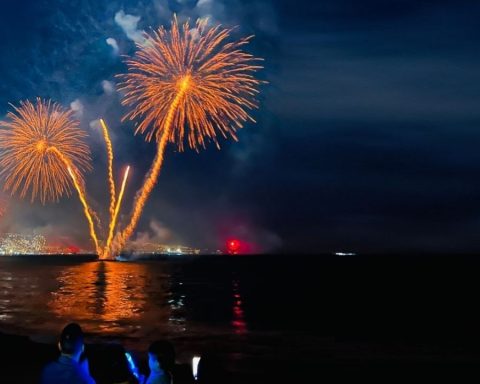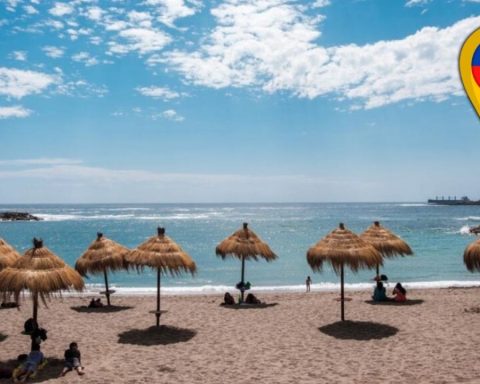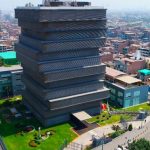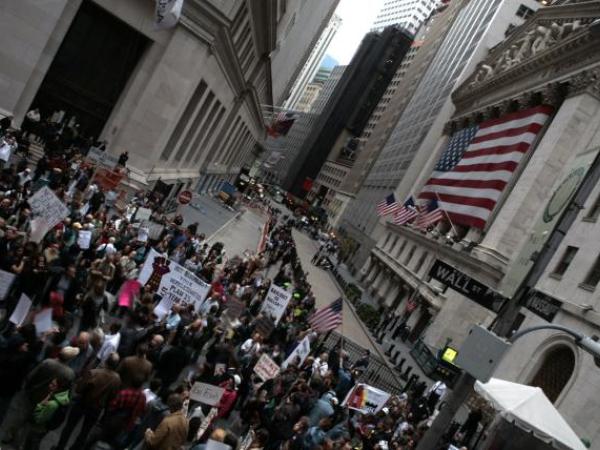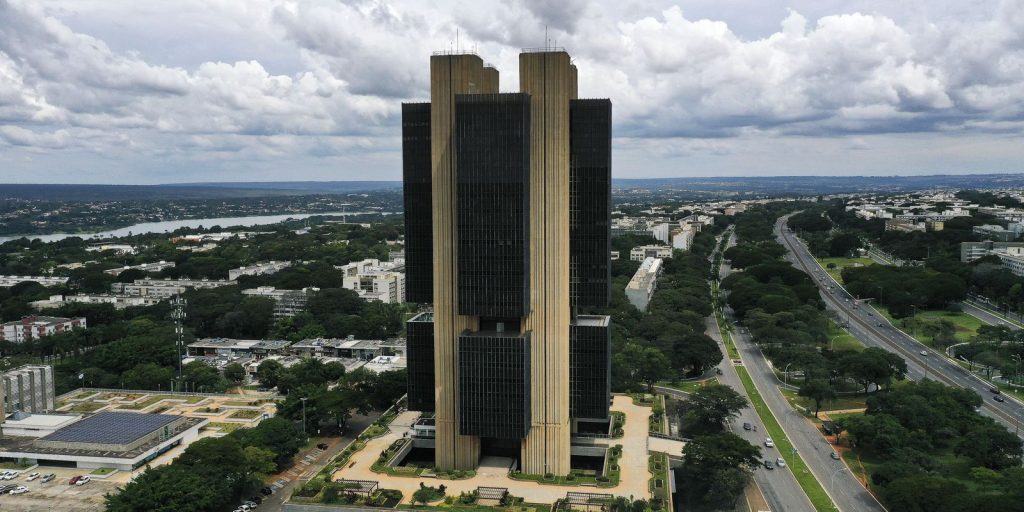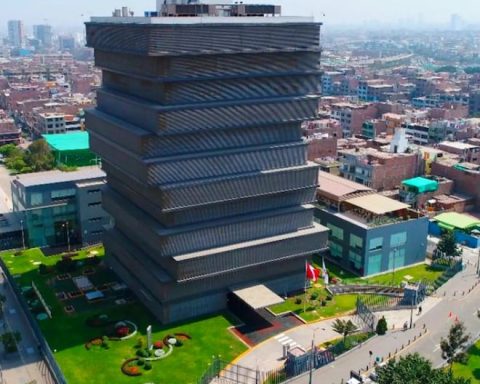The Quilicura Urban Wetland is an ecosystem that is located to the north of the commune and is divided into two sectors: the San Luis sector, made up of three polygons, and the O’Higgins sector, made up of one. It is the largest wetland in the Metropolitan Region (RM) and the second largest in the country. Wetlands are natural sponges, essential for diversity, they capture carbon dioxide, purify the air by delivering oxygen, regulate temperatures and provide fresh water.
As of today, when World Wetlands Day is celebrated, the Quilicura ecosystem is under a triple threat: companies seeking to build in the area, for which they won the first battle in the Second Environmental Court; wells that threaten the flow of the aquifers that support the wetland; and the authorization to build a sewage plant on the site.
The adverse ruling that removes protection
The territory that is considered an urban wetland covers, from east to west, from the limit of the industrial zone to the slopes of Cerrillo Lo Castro, which is mainly fed by the Las Cruces Estuary and other drainage channels.
In 2021 it was protected by the Urban Wetlands Law (Law 21,202). Initially, the municipality presented 479 hectares, which were later modified to 468.3 by the Seremi del Medio Ambiente.
A year later, three companies started a legal battle against Exempt Resolution 616 that declared the Quilicura wetlands an urban wetland. These are Inversiones Butamalal SA, owned by José Manuel Bustamante Gubbins and Rodrigo de Alencar Baraona; Inmobiliaria Los Silos III SA, of the Posada family; and Eduardo Oyarzún Iracheta and others. The companies allege that only 20% of the area meets the characteristics of a wetland according to Law 21,202, and the rest would be hydrophytic vegetation.
On October 24, 2022, the Second Environmental Court ruled in favor of them, accepting -in its judgment– partially the claims of the companies and removing the protection status of the second largest wetland in the country.
Substantively, the ruling establishes that the consideration of the environmental institutions to declare it as an urban wetland was not duly substantiated, for which reason “the procedure must be taken back to the stage of issuing a new Technical Analysis Sheet” that considers the justification on the delimitation and a new mapping of the wetland However, as indicated by the legislation, “it was established that wetlands could not be affected by any project that had not gone through the SEIA (Environmental Impact Assessment System)”.
Social organizations such as Resistencia Socioambiental Quilicura, Corporación Ngen and the Las Torres Assembly filed a complaint before the Supreme Court, as did the Municipality of Quilicura, represented by the NGO Fima. The appeals, however, were declared inadmissible.
business claims
Inversiones Butamalal bought, in 2021, twenty-two plots that are located in the current area of the wetland. The purchase of said plots in the previously protected area occurred “after the initiation of both the ex officio declaration procedure and the request of the Municipality of Quilicura. Considering that it presented records in the respective administrative procedure, Butamalal acquired the land knowing that it was object of a procedure for the declaration of Urban Wetland”, stated in a document the Ministry of the Environment.
According to what was sustained a few days ago by InterferenceInversiones Butamalal “is a company directly related to PY Real Estate, owned by businessman Francisco Pérez Yoma, known for the controversial flooding of the houses of the Copeva construction company (currently PY Real Estate) in June 1997 in Bajos de Mena, which left 620 families affected”.
Francisco Pérez Yoma is the brother of Edmundo Pérez Yoma, who was Minister of Defense in the Government of Eduardo Frei Ruiz-Tagle and Minister of the Interior in the first Government of Michelle Bachelet. Edmundo Pérez Yoma has been fined several times by the General Water Directorate (DGA) for the diversion and illegal extraction of water in Petorca, one of the towns most affected by water shortages in the country, and for which Modatima (Movement of Defense for Access to Water, Land and Protection of the Environment) has put up a strong fight, which even cost him a complaint in 2012, for advertising insults by the former minister, the then spokesperson for the movement and current governor of the Region of Valparaíso, Rodrigo Mundaca.
Inversiones Butamalal affirms that the authority determined the polygon “on the basis of severe methodological and scientific errors (…). If an adequate methodology is applied –focused on the presence of hydrophytic vegetation and hydric lands with poor (or no) drainage capacity– it is concluded that, in the Butamalal Quadrant, the area affected by wetlands would correspond to 40.53 hectares and not to the 169.17, which defines the challenged resolution”.
On the other hand, Inmobiliaria Los Silos III SA, reports who owns land since 2006 between the streets of San Luis Norte, Santa Laura, Estero Las Cruces and Avenida Nueva Vía (projected). This land is close to the Estero Las Cruces wetland and is currently unoccupied. Inmobiliaria Los Silos III pointed out in a letter that “the quantification of hydrophyte species based on photo-interpretative studies of satellite images does not correspond to a conclusive methodology to accurately establish the limits of the wetland”.
Regarding Eduardo Oyarzún Iracheta, it is known that he owns six properties in the O’Higgins sector of the urban wetland, called “Fundo María Esperanza”. In the place, the presence of a large number of hectares of rubble fills that reach heights of more than 5 meters within its “fundo” is observable.
The Oyarzún Iracheta claim that the 88.2 hectares of their property are not a wetland and that “the so-called O’Higgins Wetland could never exceed 14.2 hectares, arguing the absence of hydrophilic vegetation, that the poor drainage of the soil of the properties makes it insufficient to be declared as a wetland, “so the declaration of the Urban Wetland would violate the rights and guarantees of the owners of the property”, according to the case paper. 299-2021 (7).
The defense of the wetland

Being private land, the Municipality of Quilicura can only apply sanctions, but not usurp or expropriate the land in case of environmental damage. In addition, the municipality affirmed that if the companies want to build, they can do so by entering the projects for environmental evaluation.
Likewise, the State Defense Council (CDE) indicated that “the methodologies for the delimitation of wetlands proposed by the Complainants are biased towards reducing the wetland to its minimum expression. In addition, the way in which they present the information prevents verification of the conclusions raised in their reports”.
The Second Environmental Court clarified, for its part, that it is not currently considered to change the protection area, but rather that the ruling agreed to roll back the declaration procedure of the Quilicura Urban Wetland carried out by the Ministry of the Environment. This means that the statement is withdrawn to be made again.
Additionally, and through a statement, the aforementioned court indicated that during the time that the ministry takes to conclude the declaration procedure, the carrying out of any project or activity that may alter the Quilicura Wetland will have to be fully governed by the applicable legal provisions. regarding environmental protection, especially the provisions of article 10 letter s) of Law No. 19,300 on General Bases of the Environment. In other words, it must be submitted to the Environmental Impact Assessment System (SEIA) prior to its execution.
The Ministry of the Environment maintained, meanwhile, that the area in charge of the ministry is working on the new technical file to establish the limits, to later issue the new resolution for the declaration of urban wetland.
Decrease in water contained in wetlands
To this is added what was concluded by the Küla-Kura Observatory, which carried out a request for intervention and a report of the states of the aquifers in the area.
ANDIn its central part, it indicates that the decrease in the water contained in the wetlands does not correspond to the drop in rainfall but to “the distribution of the rights of common use of water granted by the DGA that have been diminishing the recharge capacity”..
The above is obtained by analyzing the flow granted to the Fundo La Montaña well and the water drops.


Said well is owned by Inmobiliaria Las Palmeras, whose owners are the Barros Herrera family. “Its use will be consumptive, of permanent and continuous exercise for a flow of 0.193 liters per second and a total annual volume to be extracted from the aquifer of 6,086,448 cubic meters”, indicates the Legal Notice published in Water Rights of 2019, previous date to the legal protection of wetlands.
The report explains that the intensive exploitation of wells in the sector, plus the drought, have caused the level of contained water to decrease.
In addition, there is an analysis of the aquifer unit where the water rights that could affect the water regime of the wetlands were granted, corresponding to the Colina Sur sector. Among the results, it was obtained that “the aquifer that feeds the Quilicura wetland is being overexploited.”
In detail, 4,660.1 lt/s have been granted in total, which exceeds the provisional rights of 6.72 lt/s. The resolution on the DAA restriction indicates that a total volume of 4,653 lt/s can be granted.
Wastewater plant near the wetland
In 2022, the San Isidro project was also approved, which consists of a sewage treatment plant, in Quilicura, which would add the element of contamination as a new threat to the wetland.
The plant was approved by the Environmental Assessment Commission of the Metropolitan Region. According to the community, the project of the San Isidro company will affect a urban wetland and the estuary The crosses. “It is a highly dangerous area, subject to flooding, with a clay soil (…). We call on President Boric ”, he pointed out a few weeks ago paulina bobadillamayoress of the commune.
Bobadilla was very critical of the Government: “We are hurt because this decision clearly shows the disconnect that exists on the part of the authorities with the citizenship of Quilicura”, he expressed.
In fact, the same community chief –together with the Management Commission and the Municipal Council– went to the Palacio de La Moneda on November 23 to deliver a formal letter sent to President Gabriel Boricwith the reason of rejecting the construction.
“The voices of the neighbors and the organizations were not heard. The President of the Republic proposed caring for the environment in his government program and this decision is clearly not being complied with”then maintained the mayoress.
Attachments:
(one) Judgment
(2) Document Ministry of the Environment
(3) Hydrogeological study Real Estate Los Silos III SA
(4) Real Estate Property Registry Los Silos III SA
(5) Personal inspection of the Butamalal Investment Court
(6) Letter Manuel Mejías Inmobiliaria Los Silos III SA
(7) Claim Eduardo Oyarzún Iracheta
(8) Application for intervention Küla-Kura Observatory


